Year 3
The English curriculum is built around the three interrelated strands of language, literature and literacy. Teaching and learning programs should balance and integrate all three strands. Together, the strands focus on developing students' knowledge, understanding and skills in listening, reading, viewing, speaking, writing and creating. Learning in English builds on concepts, skills and processes developed in earlier years, and teachers will revisit and strengthen these as needed.
In Years 3 and 4, students experience learning in familiar contexts and a range of contexts that relate to study in other areas of the curriculum. They interact with peers and teachers from other classes and schools in a range of face-to-face and online/virtual environments.
Students engage with a variety of texts for enjoyment. They listen to, read, view and interpret spoken, written and multimodal texts in which the primary purpose is aesthetic, as well as texts designed to inform and persuade. These encompass traditional oral texts including Aboriginal stories, picture books, various types of print and digital texts, simple chapter books, rhyming verse, poetry, non-fiction, film, multimodal texts, dramatic performances and texts used by students as models for constructing their own work.
The range of literary texts for Foundation to Year 10 comprises Australian literature, including the oral narrative traditions of Aboriginal and Torres Strait Islander Peoples, as well as the contemporary literature of these two cultural groups, and classic and contemporary world literature, including texts from and about Asia.
Literary texts that support and extend students in Years 3 and 4 as independent readers describe complex sequences of events that extend over several pages and involve unusual happenings within a framework of familiar experiences. Informative texts include content of increasing complexity and technicality about topics of interest and topics being studied in other areas of the curriculum. These texts use complex language features, including varied sentence structures, some unfamiliar vocabulary, a significant number of high-frequency sight words and words that need to be decoded phonically, and a variety of punctuation conventions, as well as illustrations and diagrams that support and extend the printed text.
Students create a range of imaginative, informative and persuasive types of texts including narratives, procedures, performances, reports, reviews, poetry and expositions.
(source: www.australiancurriculum.edu.au)
Achievement Standard
Receptive modes (listening, reading and viewing)
By the end of Year 3, students understand how content can be organised using different text structures depending on the purpose of the text. They understand how language features, images and vocabulary choices are used for different effects.
They read texts that contain varied sentence structures, a range of punctuation conventions, and images that provide extra information. They use phonics and word knowledge to fluently read more complex words. They identify literal and implied meaning connecting ideas in different parts of a text. They select information, ideas and events in texts that relate to their own lives and to other texts. They listen to others' views and respond appropriately using interaction skills.
Productive modes (speaking, writing and creating)
Students understand how language features are used to link and sequence ideas. They understand how language can be used to express feelings and opinions on topics. Their texts include writing and images to express and develop, in some detail, experiences, events, information, ideas and characters.
Students create a range of texts for familiar and unfamiliar audiences. They contribute actively to class and group discussions, asking questions, providing useful feedback and making presentations. They demonstrate understanding of grammar and choose vocabulary and punctuation appropriate to the purpose and context of their writing. They use knowledge of letter-sound relationships including consonant and vowel clusters and high-frequency words to spell words accurately. They re-read and edit their writing, checking their work for appropriate vocabulary, structure and meaning. They write using joined letters that are accurately formed and consistent in size.
(source: www.australiancurriculum.edu.au)
- Plus Plan
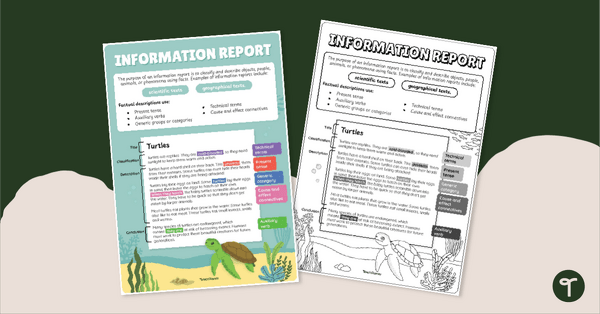
Information Report Text Type Poster With Annotations
Display this information report with annotations to help students identify the structure of this type of text.
- Plus Plan
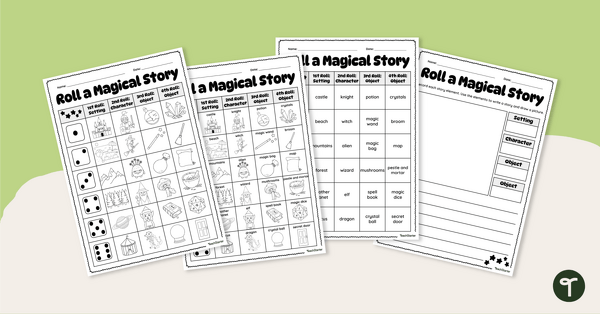
Roll to Create a Magical Story – Dice Game
Get your students writing magical stories during Book Week 2024 with this engaging and interactive “Roll to Create” dice game.
- Free Plan
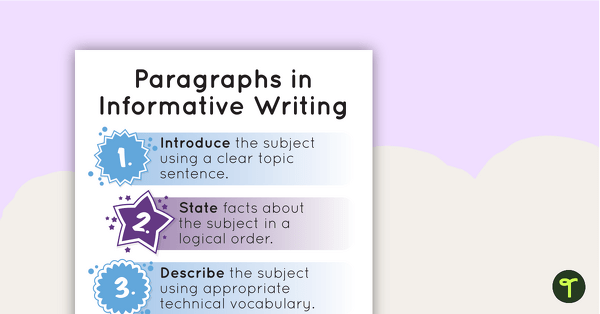
Information Report Paragraph Structure – Poster and Planning Template
Explore information report paragraph structure with this classroom poster and paragraph planning scaffold.
- Plus Plan
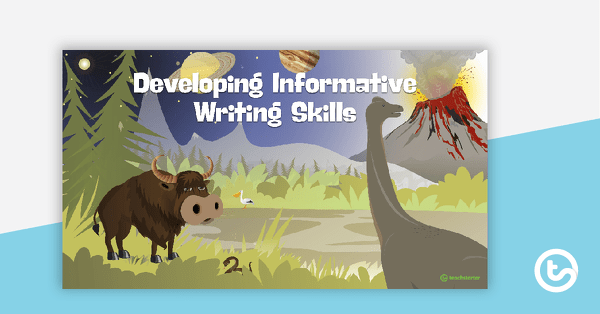
Developing Informative Writing Skills PowerPoint
A 19 slide editable PowerPoint template to use when teaching your students about the structure and language features of informative texts.
- Free Plan
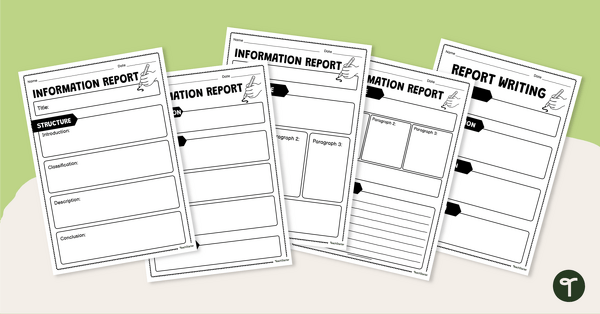
Informative Text Writing Graphic Organiser Pack
Make writing an informative text easy with free graphic organisers for your students!
- Plus Plan
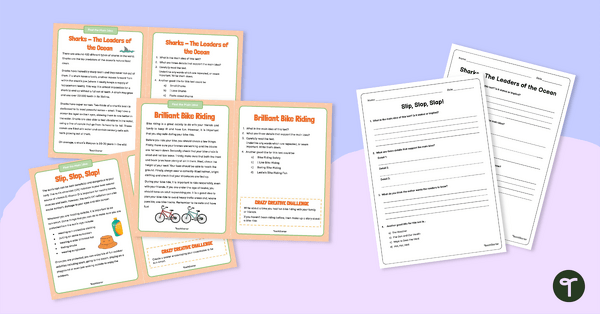
Comprehension Task Cards - Finding The Main Idea
A set of comprehension task cards to help students find the main idea when reading.
- Plus Plan
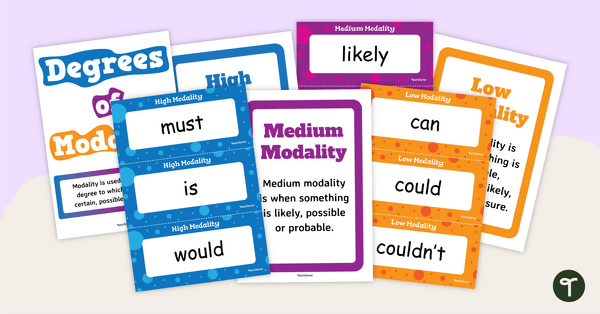
Modality Word Wall With Information
Immerse your students in high, medium and low modality words with this set of 56 word wall cards.
- Plus Plan
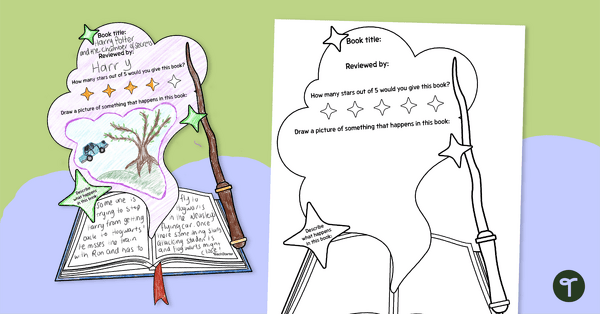
Magic-Themed Book Review Template
Create a display of student book reviews during Book Week 2024 with this magic-themed book review template for lower years students.
- Plus Plan
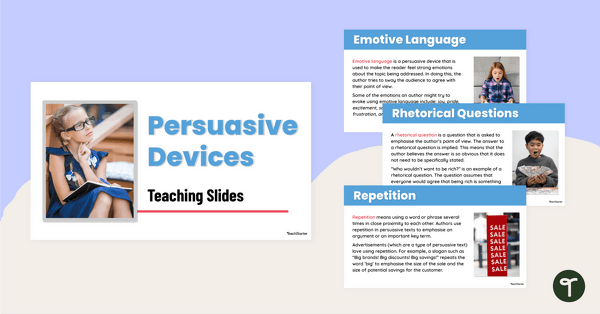
Persuasive Devices Teaching Slides
Explore persuasive language devices with your students using this detailed and age-appropriate slideshow perfect for your persuasive writing unit.
- Plus Plan
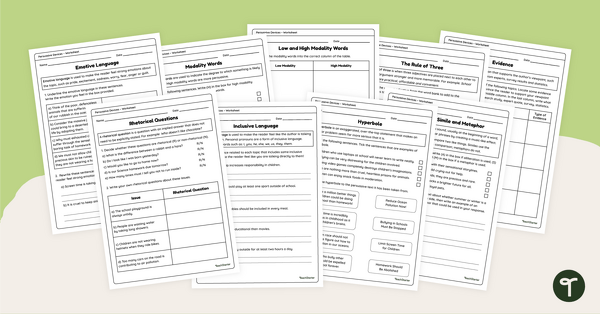
Persuasive Devices Worksheet Pack
Explore persuasive language techniques with your students using this nine-page worksheet pack perfect for your persuasive writing unit.
- Plus Plan
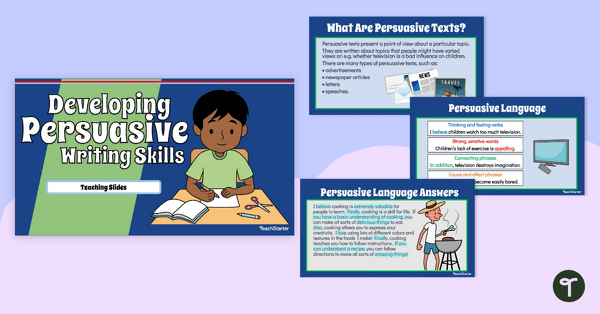
Developing Persuasive Writing Skills PowerPoint (Year 3 and Year 4)
Teach your students about the structure and language features of persuasive texts with these interactive teaching slides.
- Free Plan
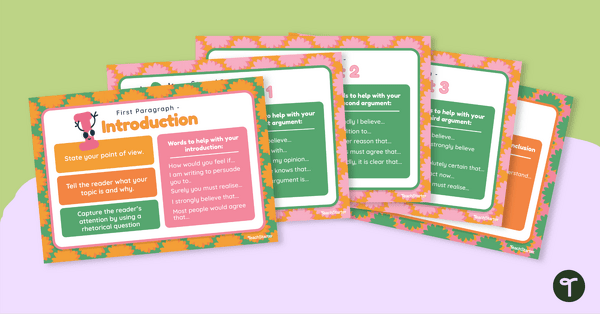
Persuasive Text Structure Posters
Explore the structure of persuasive writing with this set of 15 posters.
- Plus Plan

Year 3 Reading Fluency Passages
Assess student fluency with a printable pack of reading fluency passages for Year 3.
- Plus Plan
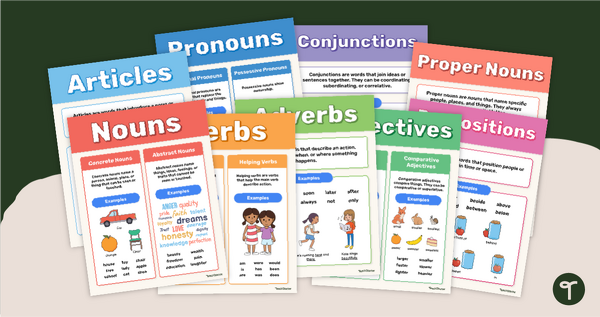
Nouns, Proper Nouns, Verbs, Adjectives, Adverbs and Conjunctions Posters
Enhance student understanding of the 8 parts of speech with these colourful, informative and easily-referenced grammar wall posters.
- Plus Plan
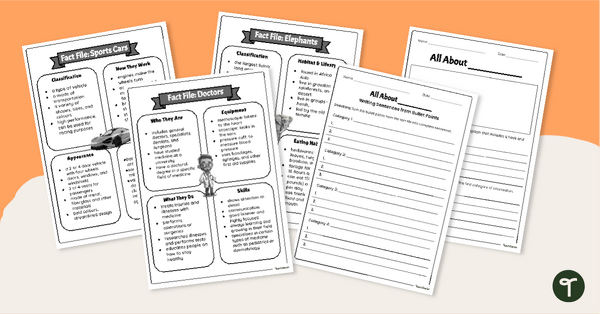
Informative Writing Fact Files - Differentiated Writing Worksheets
Teach your students to write informative texts using a pack of differentiated Informative Writing Fact File Worksheets.
- Plus Plan
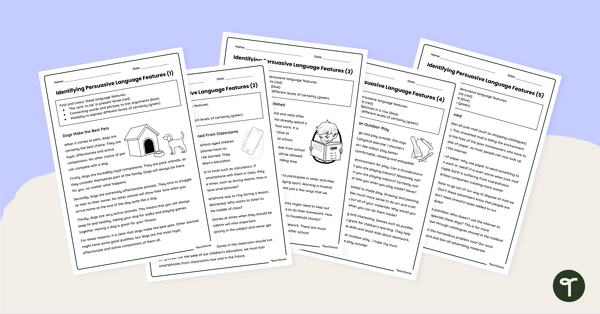
Identifying Persuasive Language Worksheets
Explore persuasive language with your students using this set of five persuasive texts on a variety of age-appropriate topics.
- Plus Plan

Glorious Grammar Volume 1 - Worksheet Book
50 activities in one booklet which all revolve around learning grammar in the classroom.
- Plus Plan
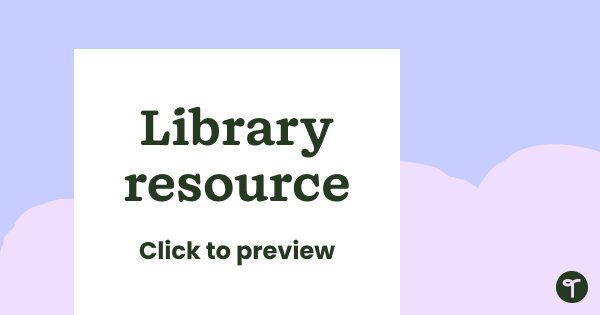
Poetic Devices PowerPoint
A 23 slide editable PowerPoint template to use when introducing students to poetic devices.
- Plus Plan

Introduction to Personal Recounts PowerPoint
An 18 slide editable PowerPoint template to use when teaching younger students about the structure and language features of personal recounts.
- Plus Plan

For and Against Worksheets
Explore 'for' and 'against' arguments for five different topics with this set of 'for' and 'against' sorting activities.
- Free Plan
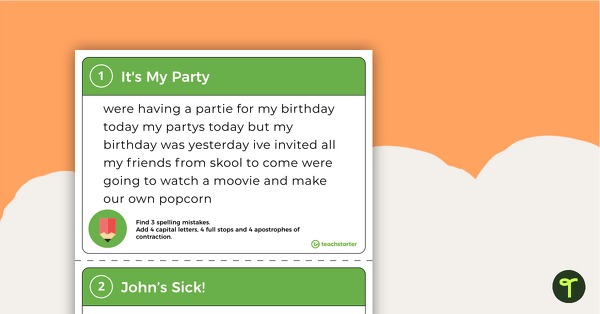
Editing Passage Task Cards for Year 3
A set of 20 editing passage task cards with answers.
- Plus Plan
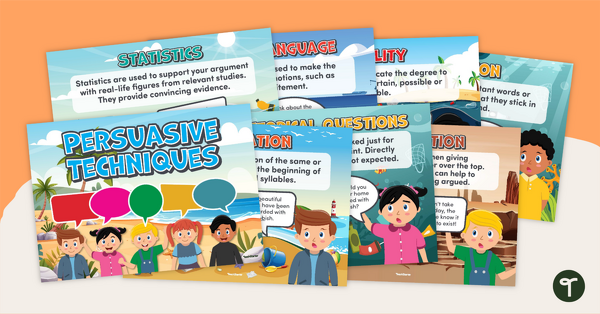
Persuasive Techniques Posters
Support students to improve their persuasive writing with these persuasive techniques posters.
- Plus Plan
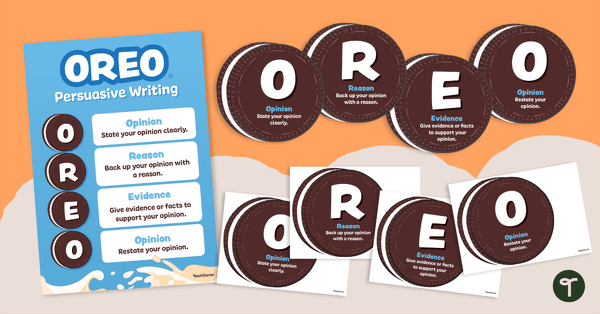
OREO® Persuasive Writing Posters
Help students remember the structure of persuasive texts with this fun OREO® acronym.
- Free Plan
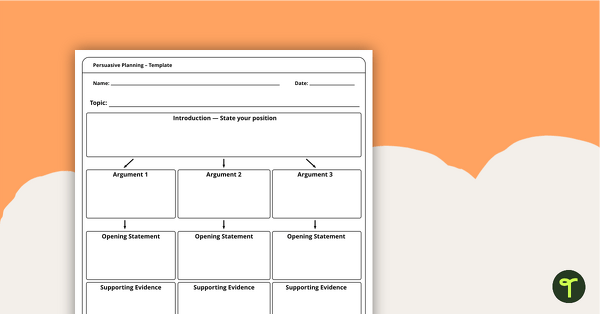
Persuasive Planning Template
A planning template to assist students in writing a well-structured persuasive text.
- Plus Plan
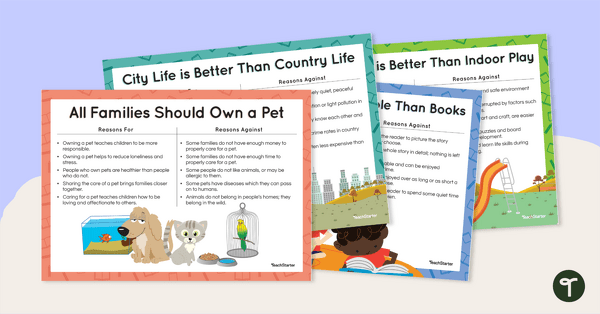
Persuasive Text Writing Prompts - Complete Set
A set of 5 persuasive writing prompts, covering a variety of topics.
- Plus Plan
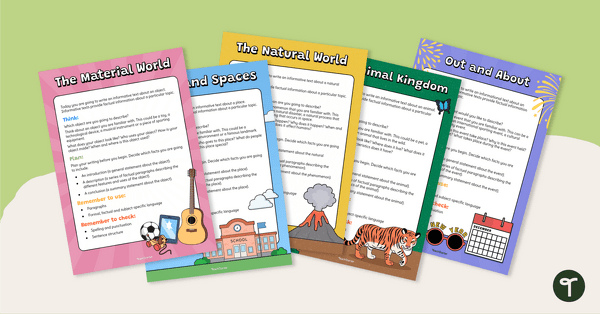
5 Information Report Writing Prompts
Use this set of 5 writing prompts to assess your students’ informative writing skills.
- Plus Plan
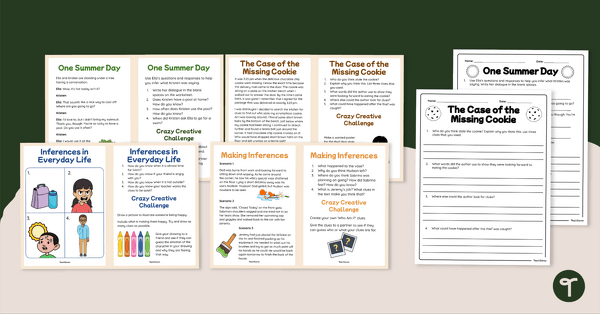
Drawing Conclusions and Making Inferences – Comprehension Task Cards
A set of comprehension task cards to help students draw conclusions and make inferences when reading.
- Plus Plan
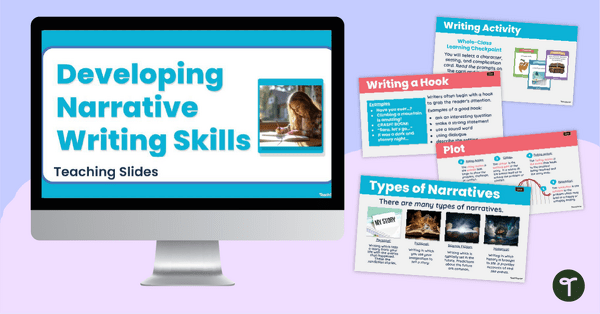
Developing Narrative Writing Skills PowerPoint - Year 3 and Year 4
Teach your students about the structure and language features of narrative texts with an engaging interactive Narrative Writing Teaching Slide Presentation.
- Free Plan
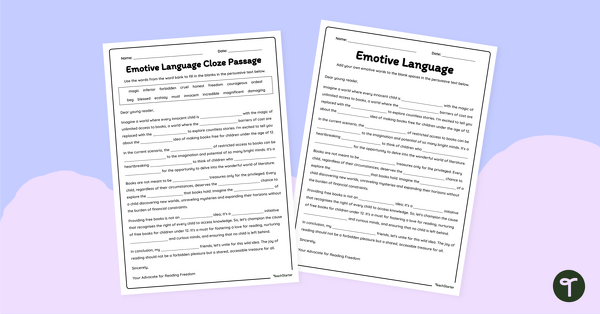
Emotive Language Cloze Passage Worksheet
Get students using emotive language examples in their persuasive writing with this differentiated cloze passage worksheet.
- Plus Plan
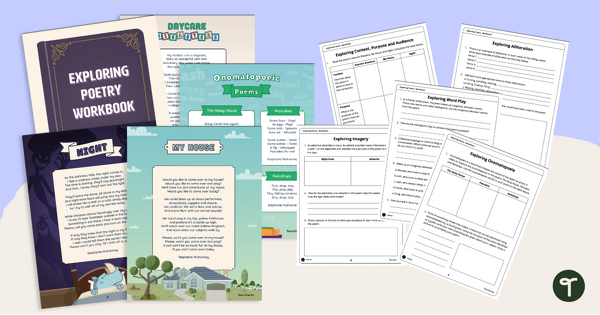
Exploring Poetry Workbook
A workbook to help students become more familiar with the genre of poetry.
- Plus Plan

Literary Devices Poster Pack
Explore the various literary devices used by authors with the set of colourful classroom posters.
- Plus Plan
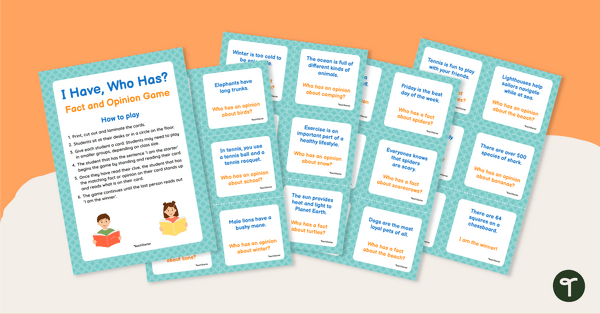
I Have, Who Has? Fact and Opinion Game
A whole class game to help students understand the difference between a fact and an opinion.